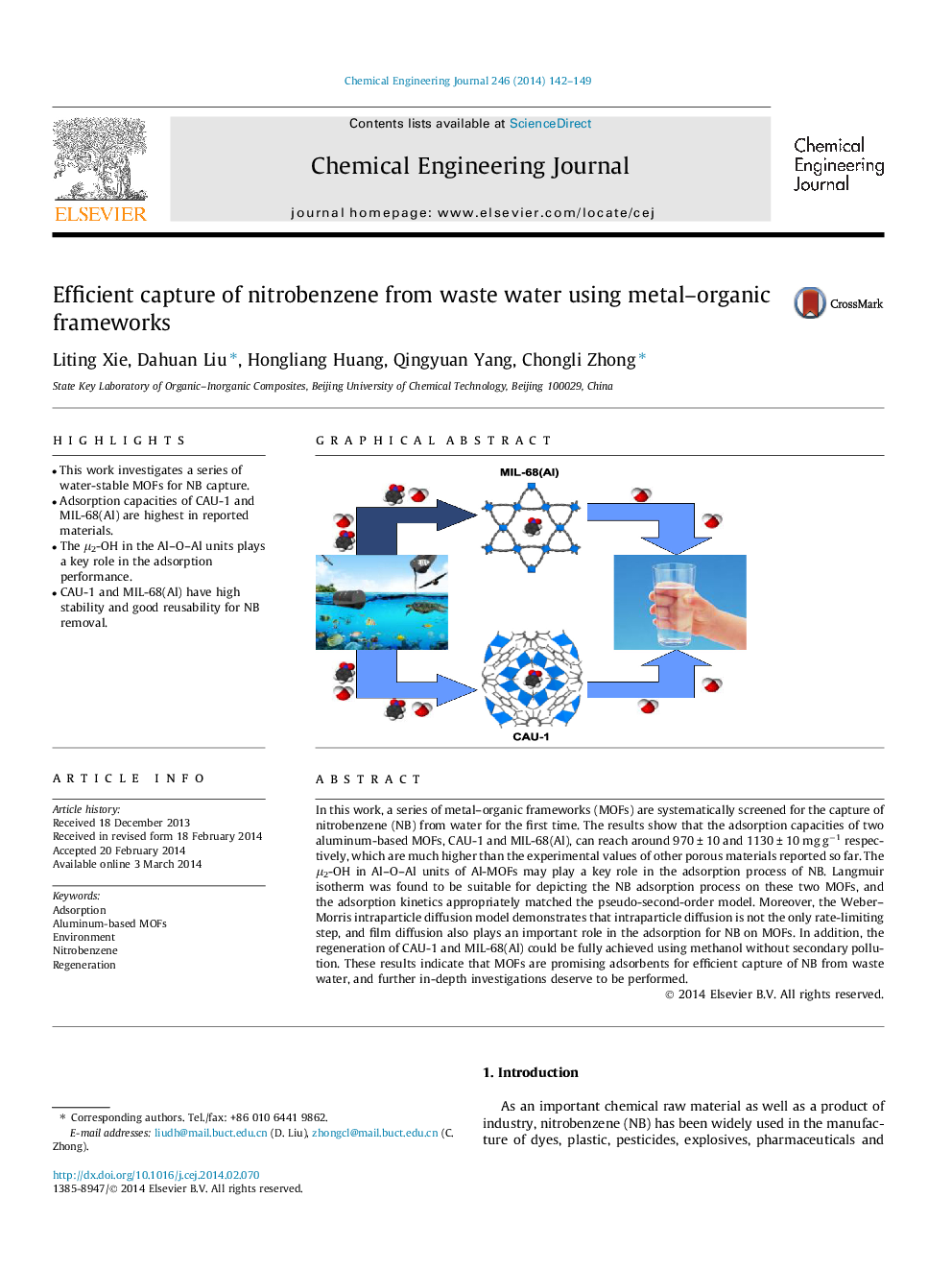| Article ID | Journal | Published Year | Pages | File Type |
|---|---|---|---|---|
| 147821 | Chemical Engineering Journal | 2014 | 8 Pages |
•This work investigates a series of water-stable MOFs for NB capture.•Adsorption capacities of CAU-1 and MIL-68(Al) are highest in reported materials.•The μ2-OH in the Al–O–Al units plays a key role in the adsorption performance.•CAU-1 and MIL-68(Al) have high stability and good reusability for NB removal.
In this work, a series of metal–organic frameworks (MOFs) are systematically screened for the capture of nitrobenzene (NB) from water for the first time. The results show that the adsorption capacities of two aluminum-based MOFs, CAU-1 and MIL-68(Al), can reach around 970 ± 10 and 1130 ± 10 mg g−1 respectively, which are much higher than the experimental values of other porous materials reported so far. The μ2-OH in Al–O–Al units of Al-MOFs may play a key role in the adsorption process of NB. Langmuir isotherm was found to be suitable for depicting the NB adsorption process on these two MOFs, and the adsorption kinetics appropriately matched the pseudo-second-order model. Moreover, the Weber–Morris intraparticle diffusion model demonstrates that intraparticle diffusion is not the only rate-limiting step, and film diffusion also plays an important role in the adsorption for NB on MOFs. In addition, the regeneration of CAU-1 and MIL-68(Al) could be fully achieved using methanol without secondary pollution. These results indicate that MOFs are promising adsorbents for efficient capture of NB from waste water, and further in-depth investigations deserve to be performed.
Graphical abstractFigure optionsDownload full-size imageDownload as PowerPoint slide
